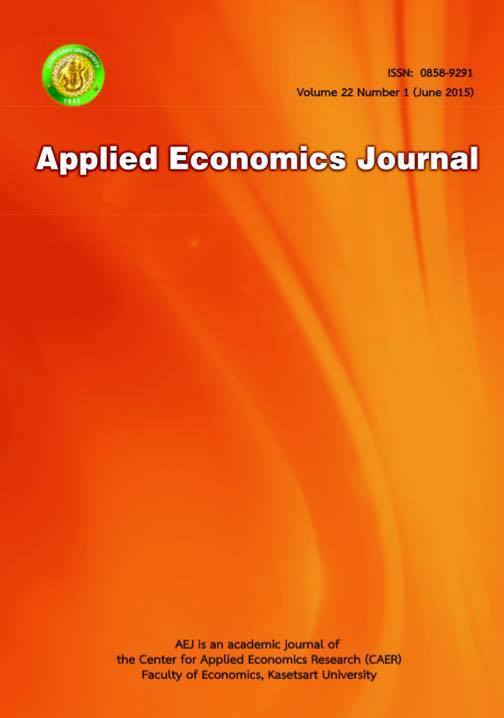A Study of Maize Farmers’ Incomes and Vicious cycle of Highland Maize farming
Main Article Content
Abstract
With continuous supports by the Thai government and private sector over the past three decades, maize has become one of the major cash crops grown in many parts of Thailand. This paper employs data gathered from maize farmers in various areas of Wiangsa District in Nan province, to investigate a profit margin out of a price per kilogram of maize retained by farmers, taking into account the differences in farmers’ socioeconomic contexts, and their sources of money spent on maize cultivation. The result obtained allows us to calibrate the farmers’ accumulated income over the year 2004 to 2010. Linear regression and Logit model are used to find factors determining level of maize income and a tendency of farmers to rely on informal credit as a source of money used for cultivation, respectively. These analyses highlight the importance of highland/lowland factors, that is: the highland farmers tend to have lower level of maize income and are more dependent on informal credit than the lowland ones. A qualitative analysis of farmers’ access to certain agricultural policies, together with the results from regression and calibration analyses enable us to get a big picture of the situation faced by highland maize farmers. Such situation is wellcaptured by a “vicious cycle of highland maize farming” whereby the more farmers produce, the worse their situations become.
Article Details
The paper is published under CC BY-NC-ND, in which the article is freely downloaded and shared in its original form non-commercially and its citation details are identified.


